Rig tour: Thrice
Dustin Kensrue and Teppei Teranishi on baritones, dual-amp backline and pedals aplenty
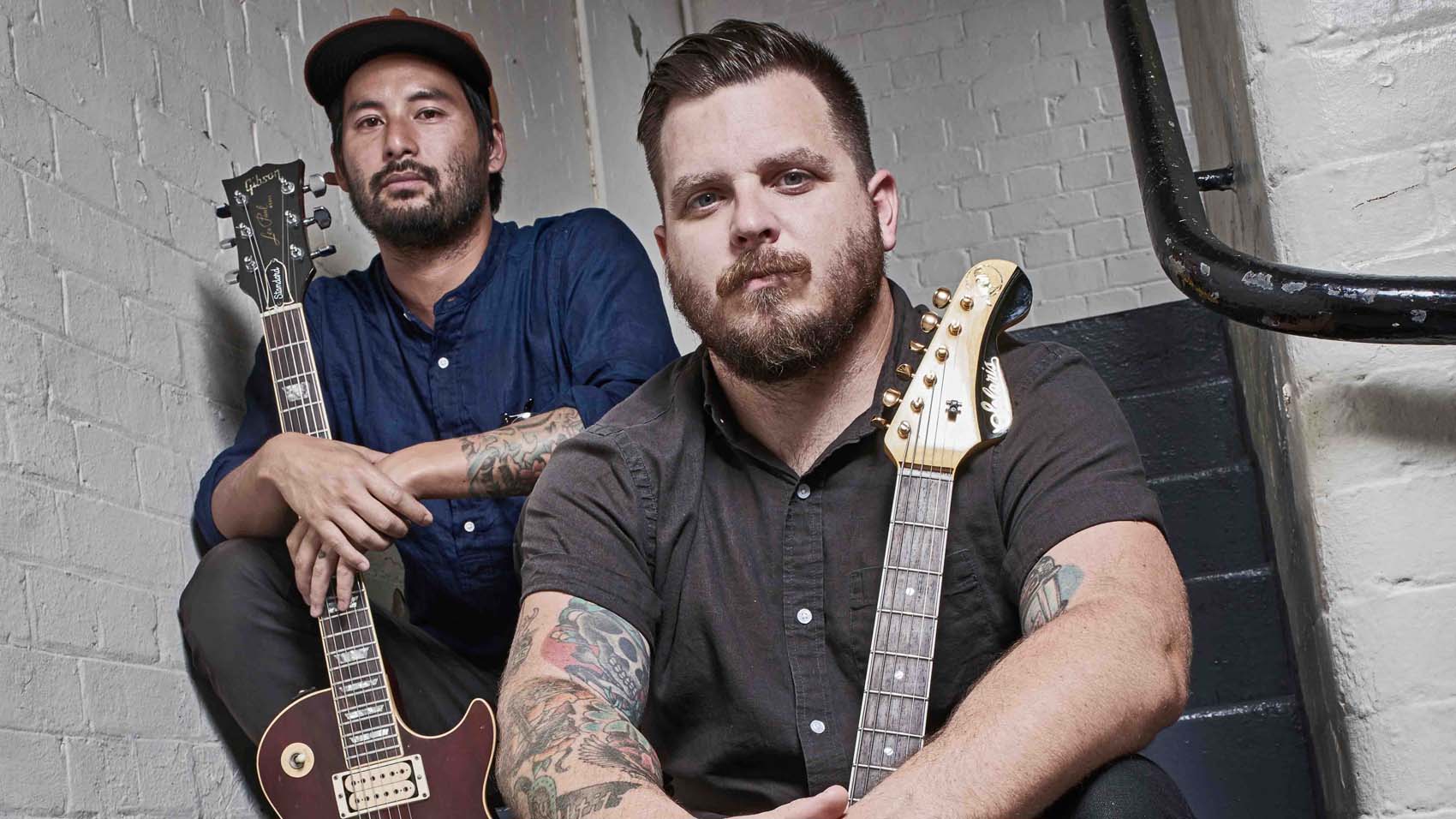
Introduction
Since their 2000 debut, Thrice have never stood still musically, weaving post-hardcore with electronic elements, time signature shifts and concept albums to become one of the brightest beacons in modern-day alternative rock.
As they make their post-hiatus return to London’s O2 Forum Kentish Town, four years on from their then-farewell UK gig, their rigs have undergone an overhaul to match the renewed focus that resonates throughout comeback album, To Be Everywhere Is To Be Nowhere (which we discussed in-depth with the band earlier this year).
Here, we join Dustin Kensrue and Teppei Teranishi to discuss their uncompromising approaches to tone, the inspirational quality of a good baritone and some serious overdrive stacking…
Don't Miss
Thrice talk working through tension to create To Be Everywhere Is To Be Nowhere
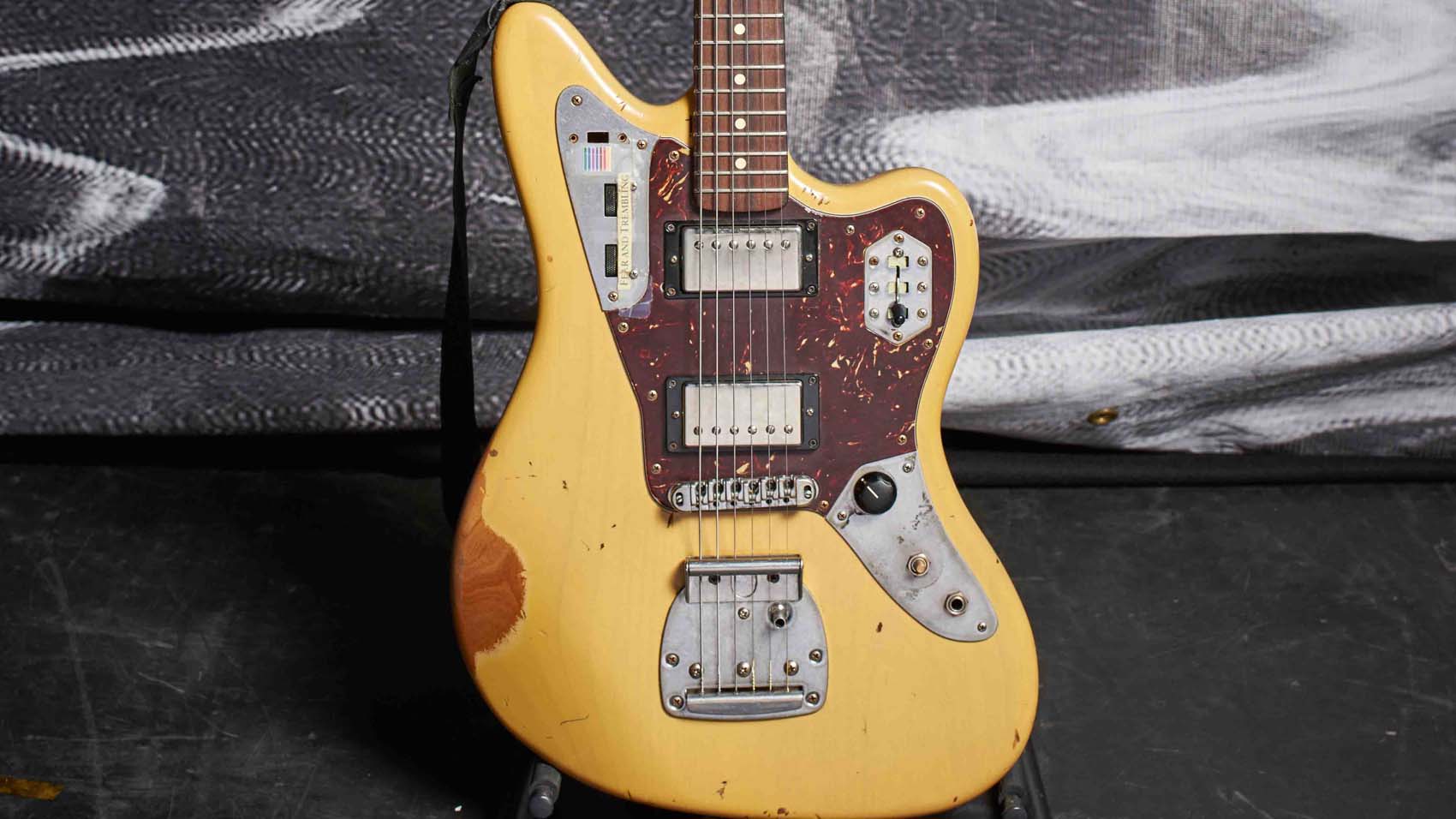
Nash Jaguars
Dustin Kensrue: “They’re exactly the same. I put Lollar humbuckers in: the High Wind Imperial humbucker in the bridge and the El Rayo in the neck – that’s their own creation, and it sounds a bit like a mix between a humbucker and a single coil.
I feel like those pickups balance pretty well, tonally and output-wise. And all the other electronics are ripped out; it’s just got a Tele-style three-way switch on it. The Jags are tuned D to D or drop C.”
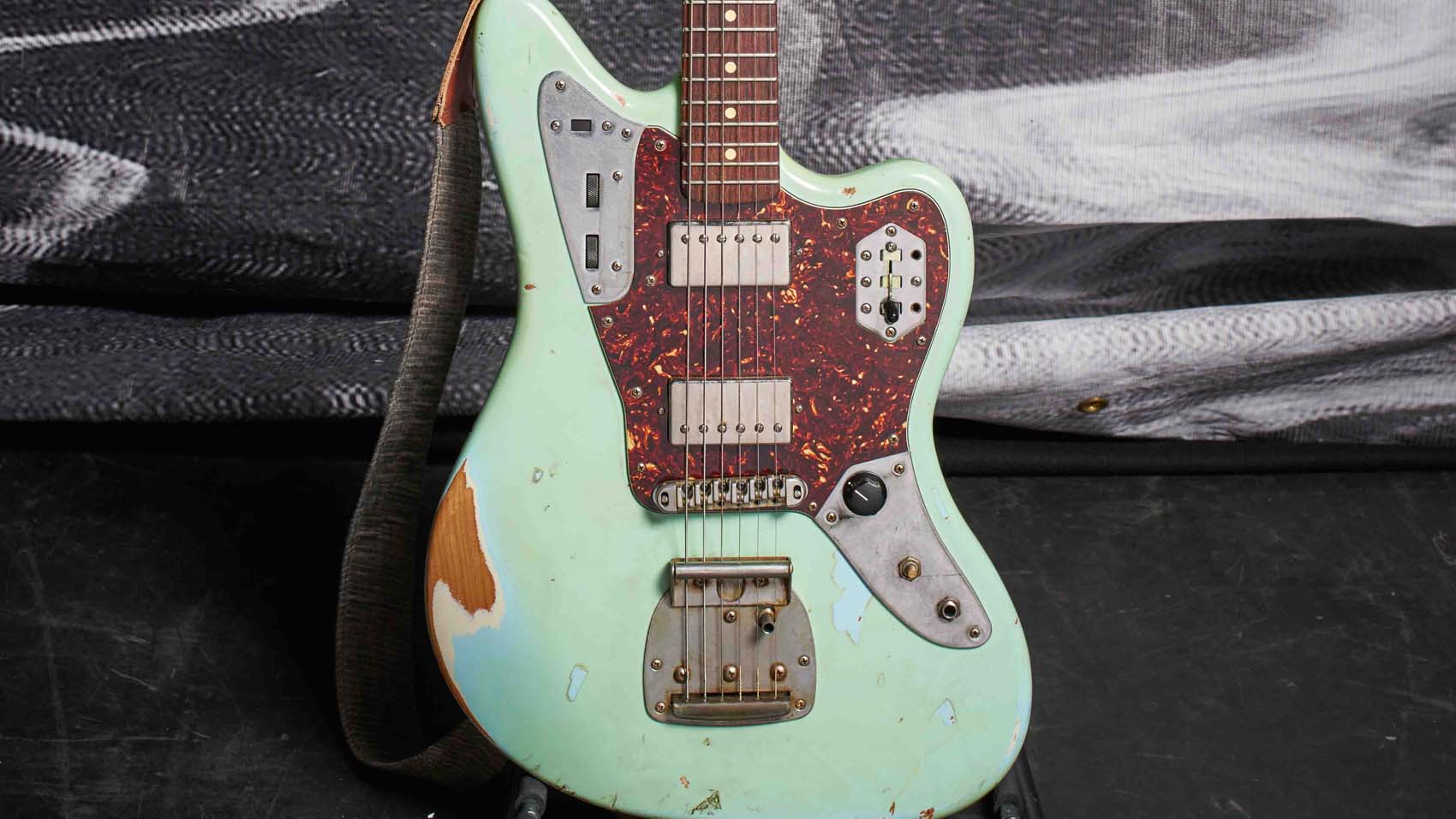
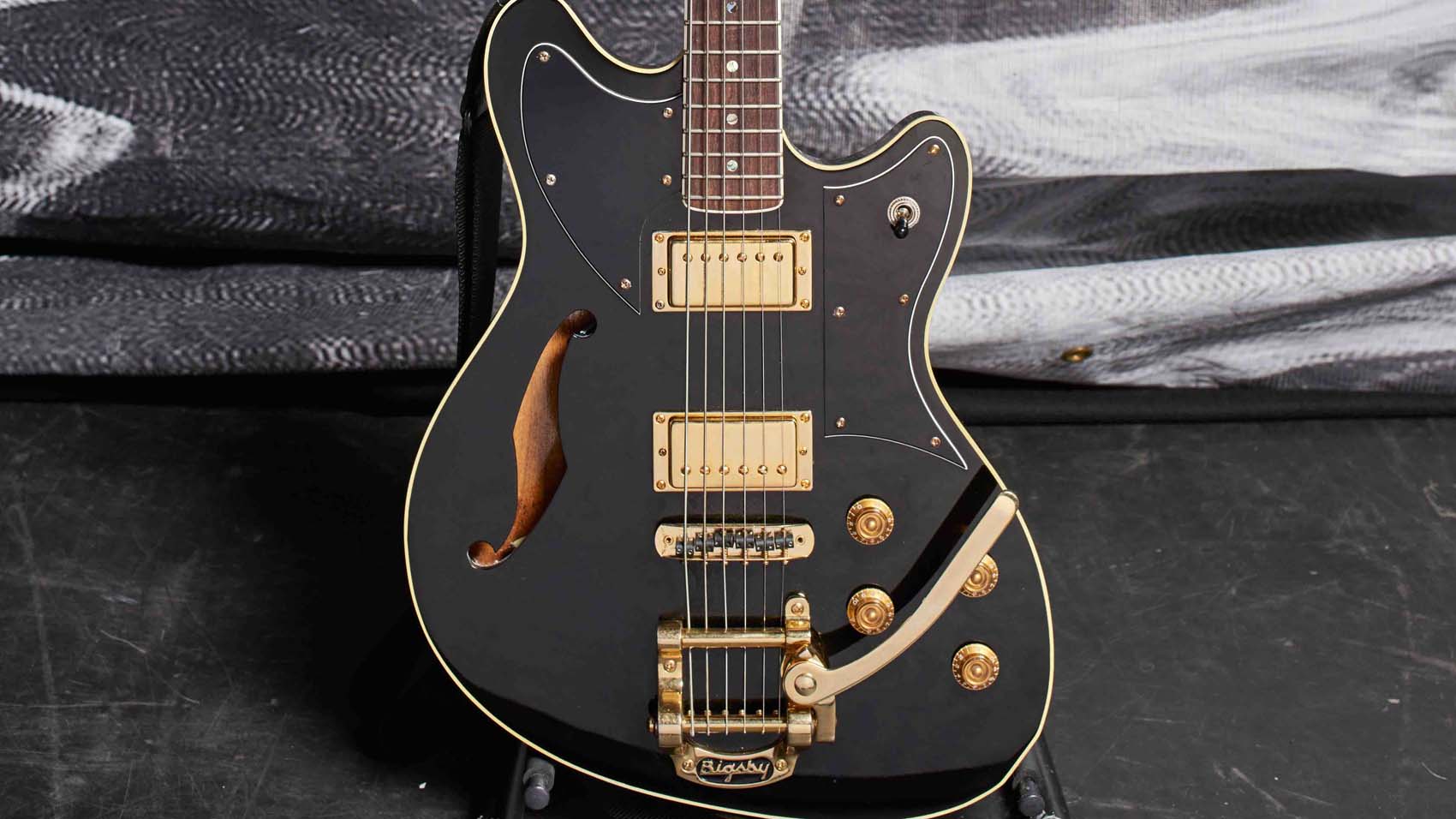
Cave & Canary Solaris baritone
Dustin: “[The Dear Hunter frontman] Casey Crescenzo built it from us just talking about it – I told him I wanted it to look like a mix between a Jazzmaster and a 50s Blacktop Les Paul with the black and the yellow binding. Something went weird when he was making it, and he ended up doing that split pickguard, and I absolutely loved it. I was like, ‘That’s the best thing about it!’
It’s got the same pickups as the Jags, and it sounds great; it’s semi-hollow, which adds an interesting percussive quality that actually I think helps with the lower tuning. I don’t use the Bigsby a ton, but it’s fun to play with. That one’s tuned B to B, or drop A.”
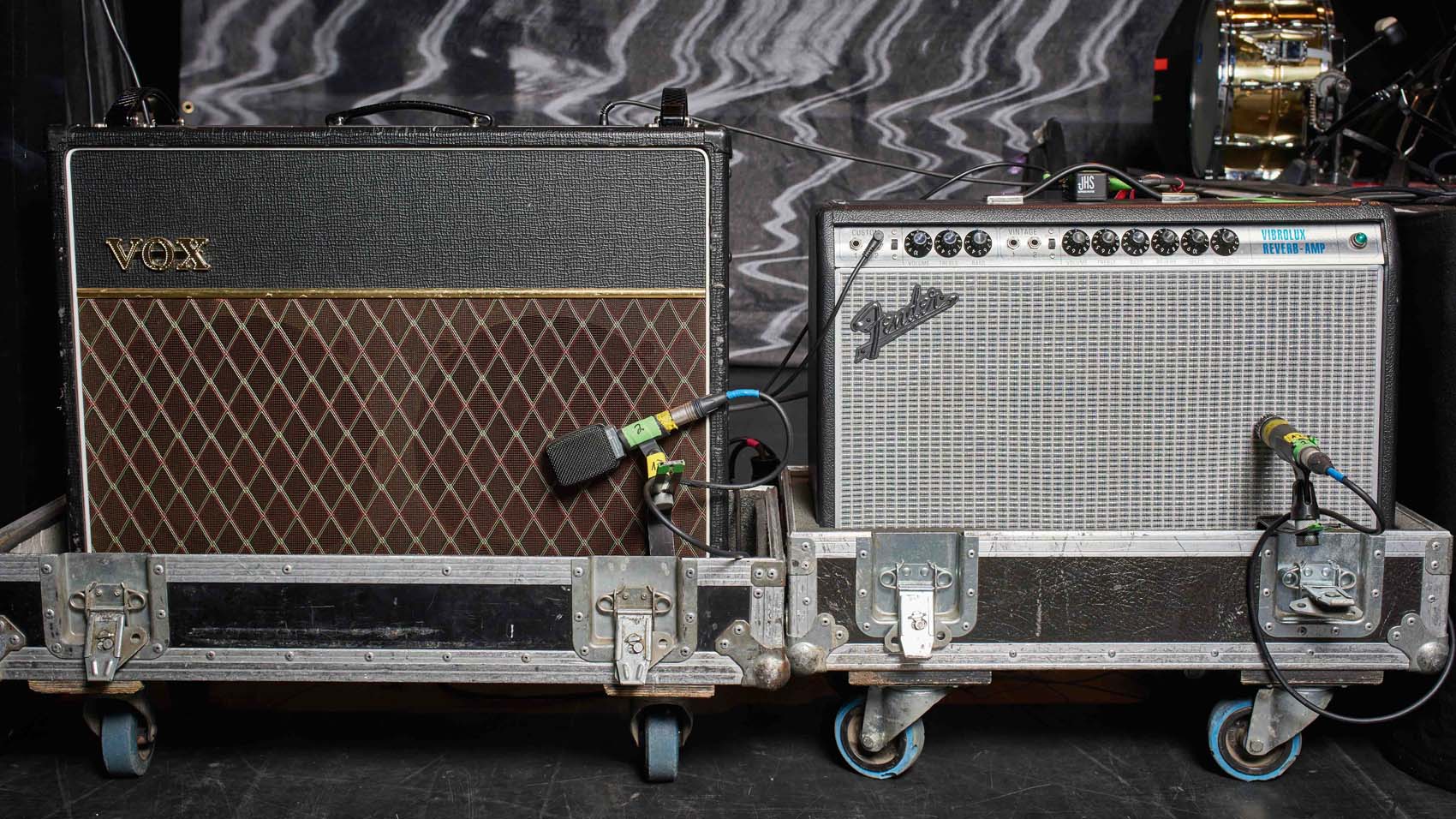
Fender '68 Custom Vibrolux Reverb
Dustin: “It responds really well to pedals; I used to play more where I was pushing the amp a ton with the volume knob on the amp and backing it off with pedals. And a while ago, I just switched to trying to use different overdrives to really push the amp.
“So, it’s sitting at 5, just right where as you’re turning it [while] playing, you hear it kind of jump, and it’s really lively there, but it can go a variety of directions. It’s very dynamic, which I like. There’s a Bassman circuit in the amp, and that’s actually what I’m running through.”
Vox AC30
“The AC30’s just because I don’t have my New Vintage DK36 with me, but I played AC30s for a long time, so they’re great workhorse amps. It’s just [paired with the Vibrolux] so it’s not two of the same exact amp. It gives our sound guy a little more to work with.”
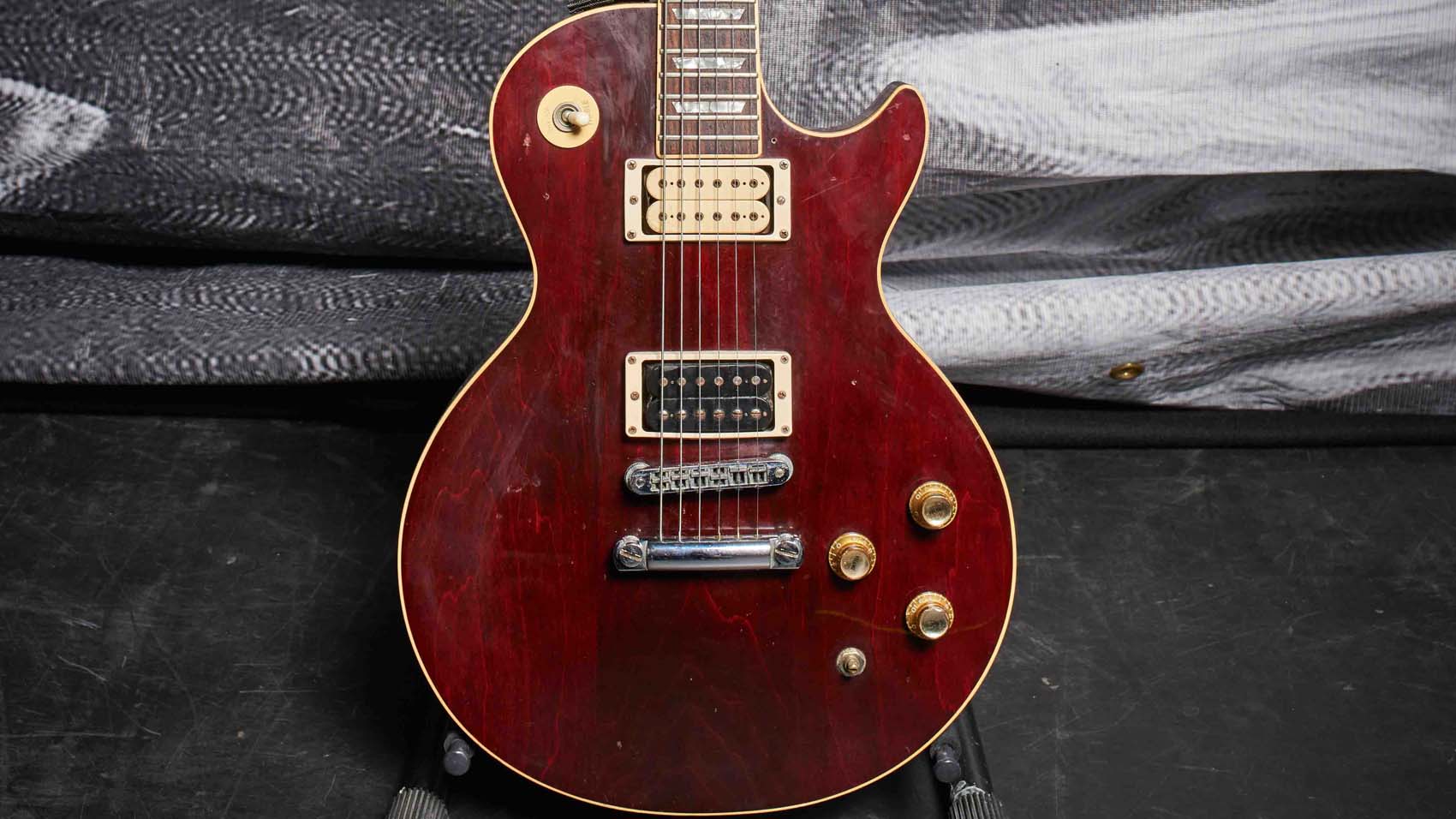
Gibson '72 Les Paul Standard
Teppei Teranishi: “I used to play a black Les Paul Custom a lot, which was my road guitar; that got stolen, unfortunately. This particular guitar is actually the first kind of nicer guitar I bought way back in the day. And so I babied that when I got it – I took it out for a little bit, and I was like, ‘I don’t want this thing to get ruined on the road.’
“And so it’s been hiding for years and years. I’d bring it to studio sessions for recording, and I used it quite a bit on the first few records, up until The Artist In The Ambulance, and then the latest one as well. I believe it’s got DiMarzio Super Distortions, and they were just original with the guitar when I bought it.”
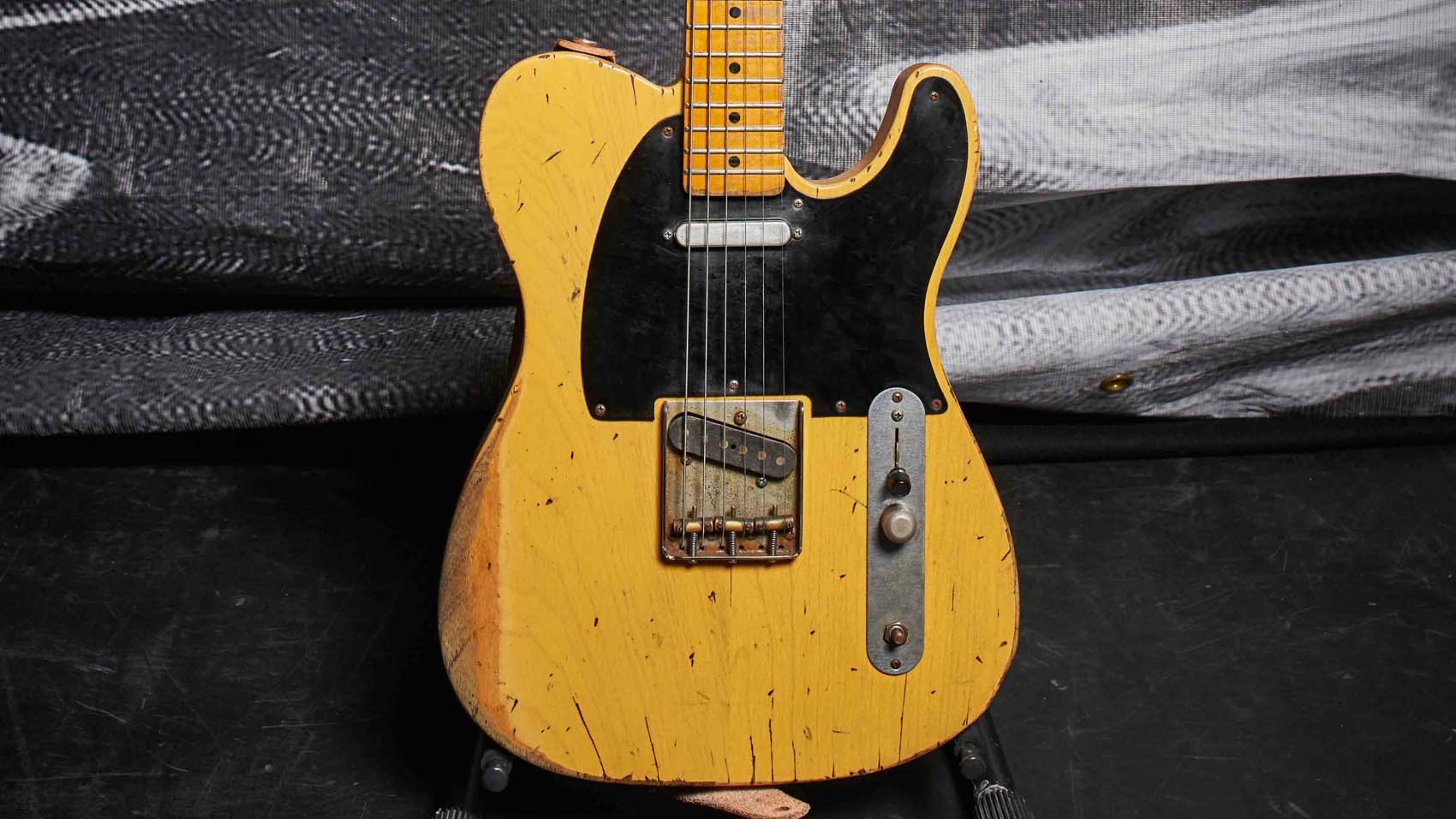
Nash Telecaster
Teppei: “I got it back in 2003 or 4, and since then, the specs have kind of erased out of my mind. [laughs]
“I’m pretty sure it’s got Lollars in it. It was one of those things where I got the guitar and it sounded great, and I was like, ‘Sweet!’ So I haven’t touched it; it’s been as is since 2004.”
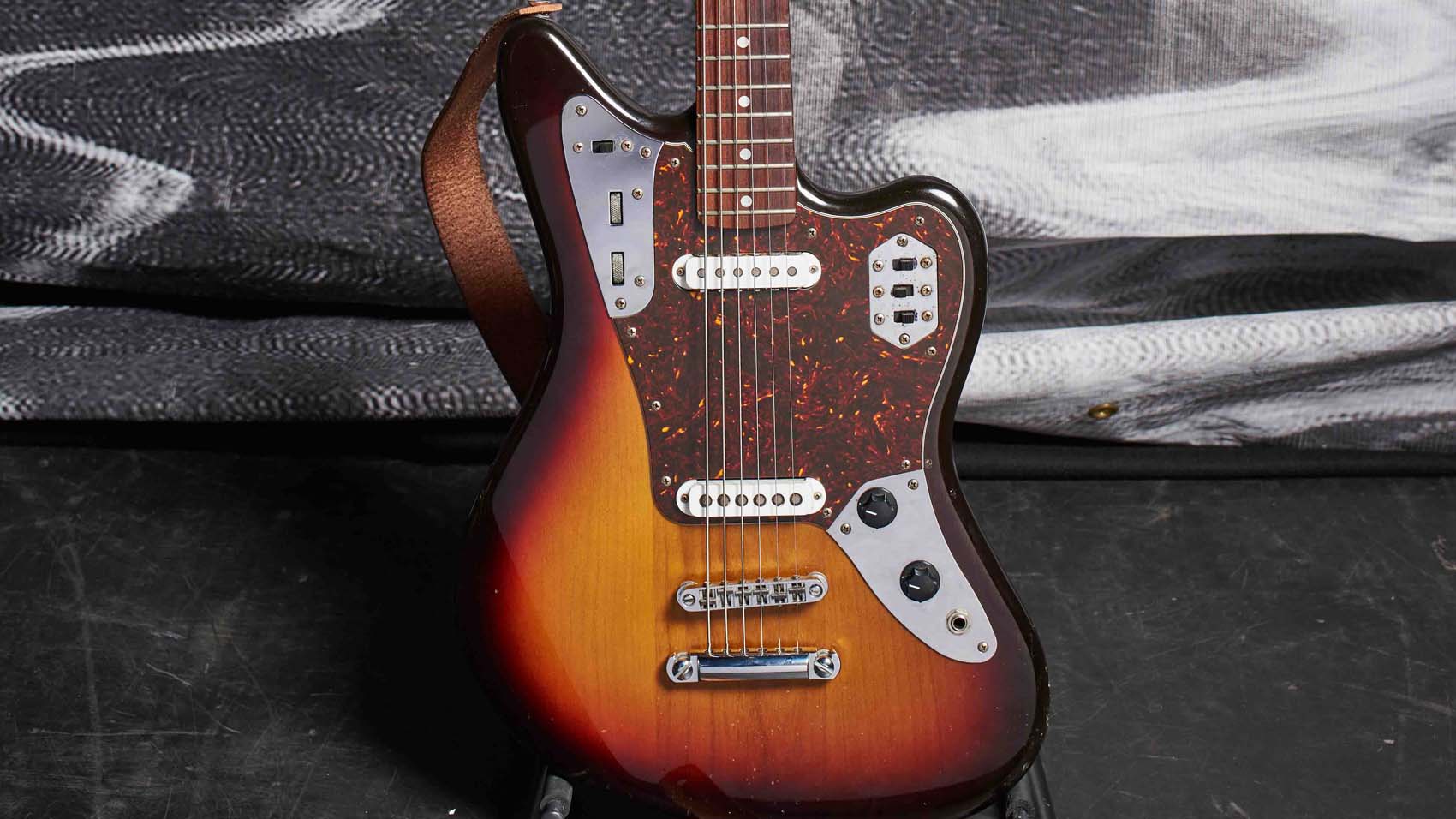
Fender Jaguar Baritone
Teppei: “That’s all stock, except for the bridge pickup, which is a Seymour Duncan Quarter Pound for Jaguar. I needed something higher output, and that seemed to make sense.
“The guitar doesn’t sound good per se; it’s just a really nasty-sounding guitar, but that’s why I like it, so I tend to just play the bridge pickup and that’s it. It’s an interesting juxtaposition between having a [low] B and a deeper tuning, but then it’s a really bright and kinda harsh tone.
“That guitar, just the way it sounds, has really informed a lot of the riffs I’ve written with the baritone. I don’t think I would have written the Yellow Belly riff if I wasn’t messing around on that guitar.”
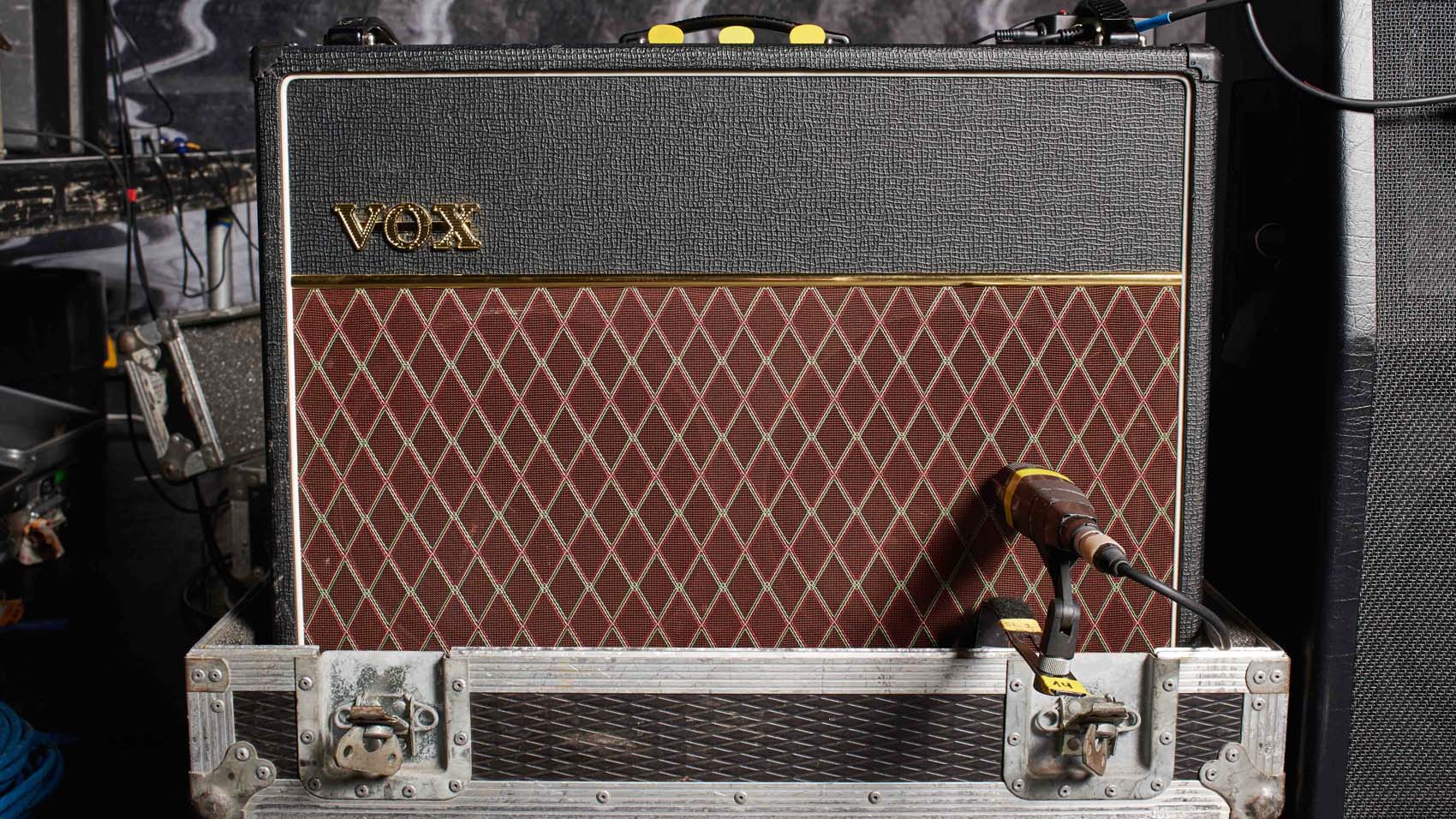
Vox AC30
Teppei: “I’ve used AC30s for I don’t even know how long. It’s funny, because people ask me about my tone, and I’m like, 'It’s just an AC30 – it’s not even a good one!' I don’t even know what the model is technically, but it’s just one of those from the 90s.
“I just run through the Top Boost circuit. Nothing real special at all, but it sounds good. It’s what I’ve been using forever.”
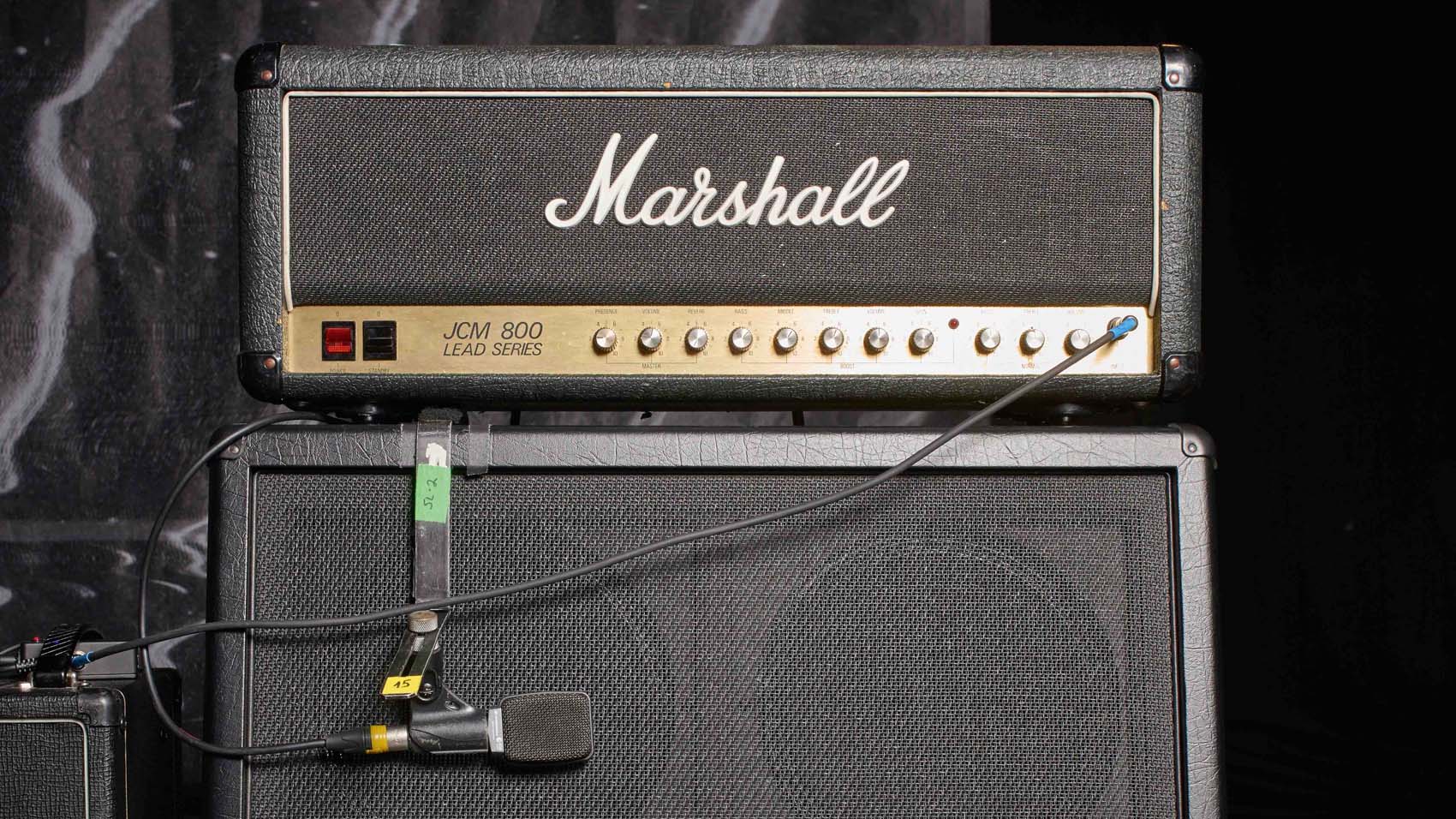
Marshall JCM800 & Mesa/Boogie 4x12 cab
Teppei: “We’re renting the backline on this tour, so I’m running a JCM800 with a Mesa cab.
“Our sound guy just likes to have flexibility, and I think he’s using the JCM800 for some of the heavier stuff.”
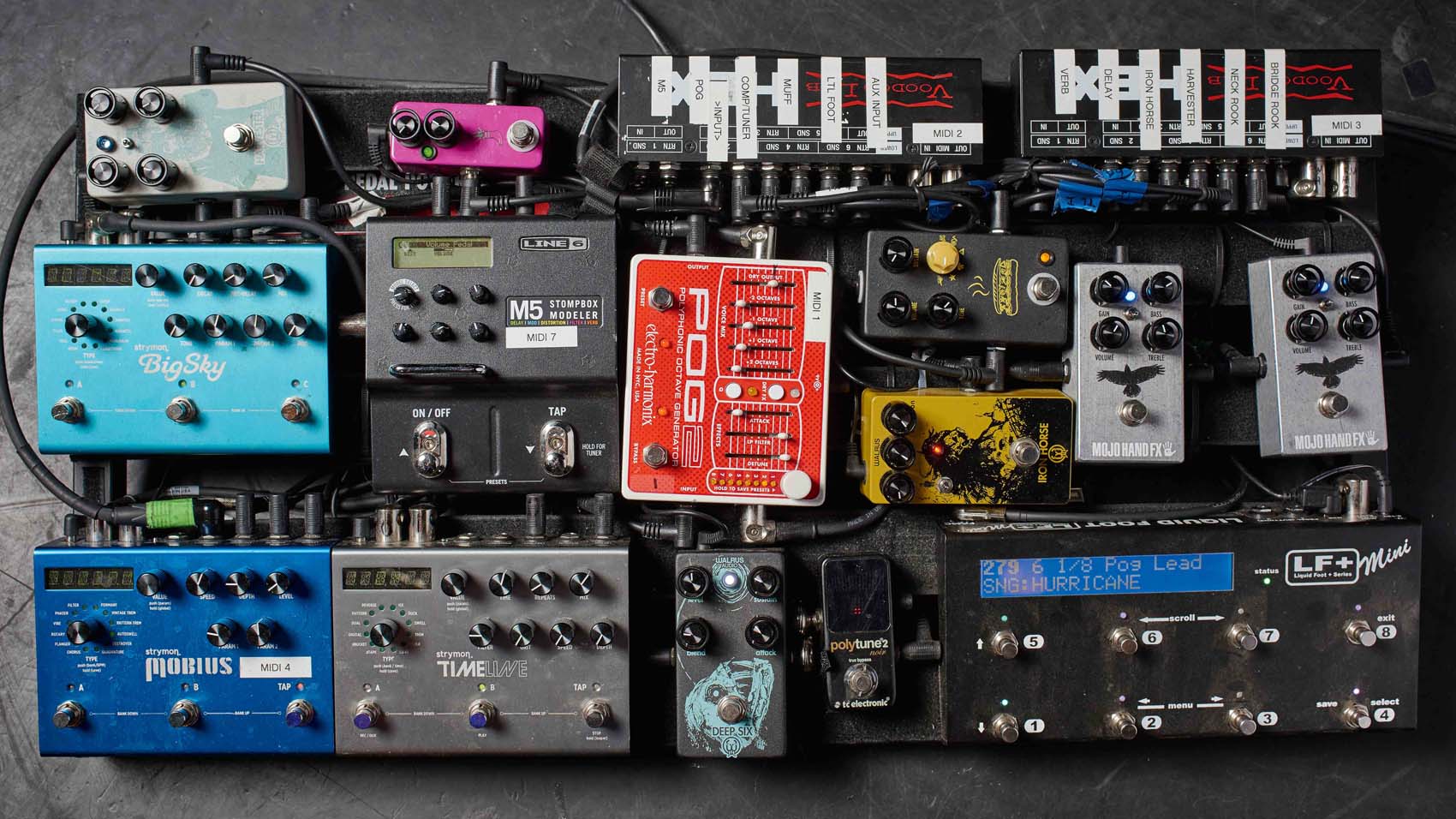
Dustin's pedalboard
Gain stages: 2x Mojo Hand FX Kensrue Rook, Walrus Audio Harvester, Walrus Audio Iron Horse, JHS Muffuletta
“One Rook is for when I’m using the bridge pickup, and one is when I’m using the neck pickup, so they’re just EQ’ed slightly differently to get those pickups to sit more in the same space – I really hate the overly muddy sound of a neck pickup when I’ve set it for the bridge pickup.
“One of the Rooks is always on, so it’s my baseline tone, and then I’ll use the Line 6 M5 to notch down one or two steps with the volume pedal on there, so that’s decreasing the input into the Rook.
“I have five levels [of gain]: three is the Rook, I can go down two on the input, and then if I want to go up, I add the Harvester in line, and then the next level adds the Iron Horse.
“That Iron Horse is really cool, and that’s my main bigger rock tone, and it can handle getting a bit jumpy without sounding like a Metal Zone or something – it still sounds really musical and full. And then I’ve got the JHS Muffuletta, where they basically put all of the Muff circuits in one pedal, and I’m using their own custom one – it’s really cool.
The reason I end up [stacking drives] is because I was really trying to keep a consistent tonal palette as it built
“That stacks on top of the other ones, so it’s a lot of stacking. The reason I end up doing it is because I was really trying to keep a consistent tonal palette as it built, and I wasn’t liking it going to something completely different.”
FAMC Liquid Foot+ Mini MIDI controller/2x Voodoo Lab Hex Audio Loop Switcher
“Everything on there is tied to that Liquid Foot, and so that’s controlling those two Hexes on top from Voodoo Lab, and they’ll turn any of the things on or off, and then it will also MIDI control which effects are on on the Strymons, as well as the Line 6. I modded the POG 2 to receive MIDI signals as well.
“It’s a lot of work to set up, but once I’m playing, I only have to hit a button and it will change a variety of things. So, with me singing, I just got really sick of dancing around. There are song-by-song presets, and a general logic to the way that I lay out the five or so buttons that I’ll push.”
Walrus Audio Deep Six
“I’ve never used a compressor until really recently. I just didn’t find one that I liked; it felt like it was crushing the tone, and I didn’t feel that way about the Deep Six.”
JHS Mini Foot Fuzz
“It’s a fuzz pedal, but it’s not incorporated in anything yet; I’m just playing around with it.”
Strymon BigSky, Strymon Mobius, Strymon TimeLine
“They’re all over the place. They’re on a lot of stuff, but I think that the BigSky is just phenomenal, and so I use that a bunch now to transition between songs. There’s a setting on the Liquid Foot that I can hit and it will create a pad out of what I was just playing that will hold until I click something else off, and it’s super-helpful just to help with the flow. But that thing is super-versatile, and it just sounds amazing. All those pedals are fantastic.”
Electro-Harmonix POG 2
“I haven’t used it before this record, but it’s on a lot of the kind of lead stuff; it’s just in there a little bit, so the main riff on Hurricane, it’s on there, and it’s on the guitar in the verses of Stay With Me. So, it’s in there pretty subtly, but it adds a thickness and dimension to some of that stuff.”
Line 6 M5 Stompbox Modeller
“It’s the Swiss Army knife. I feel like it’s not super-useful on its own, because you can only have one thing on at a time, but there’s so many random little things that you can do with it that being able to control with the MIDI is super-helpful. So, I’ll have this spot where I have this weird synth sound in the middle of All The World Is Mad, and I use it for volume cuts right now.”

Teppei's pedalboard
Walrus Audio Julia
“I actually never liked choruses ever, but we ended up using quite a bit on this last record and it just worked, so I was like, ‘I guess I need a chorus pedal now!’ So Dustin was like, ‘Try this one!’ and I really like it; it’s beautiful-sounding. It’s got the chorus and the vibrato, and then you can actually blend in between, so I think it’s the vibrato that’s winning me over – I’ve always thought vibrato’s really musical and pretty.”
Walrus Audio Descent
“There’s three different presets that you can do with that, so I just have a basic hall-type setting, one that’s a little more spring-sounding, and then one that’s the shimmer octave setting. There was this pedal that we used to use called the [Boss] PS-3 Pitch-Shifter/Delay – the Cave In pedal was what we called it. And so that has that vibe, and we use that on quite a bit of stuff. So, I’m using the shimmer setting as my PS-3-ish thing.”
JHS Panther Cub
“That’s my analogue delay, which has got tap tempo. It’s cool – it’s got the different subdivisions, but I just keep it on one. That’s my only delay.”
Walrus Audio Transit 5 True Bypass Switcher
“I basically have all the wet stuff running in one loop, so I can turn that on and off. And then I’ll turn little things on or off for different songs – maybe one needs chorus, one needs delay, one needs reverb, so I’ll just turn those on and off.”
Saturnworks Volume Pedal
“Dustin runs his amp halfway and adds; I do it backwards, so I run my amp super-hot, and if I want to clean it up – because the Vox cleans up real nice, and it reacts to the signal that you give it real nicely – I just cut the volume for clean stuff, so that’s what that is.”
JHS Pulp ’N’ Peel
“I run it real light, always. It just adds a little mojo.”
JHS Double Barrel
“That’s just my distortion, overdrive, whatever you call it. It’s all over the board, here and there. It’s pretty simple.”
Line 6 M5 Stompbox Modeller
“That’s my, ‘I need this one random thing for this one part in this one song’ pedal. There’s a couple of things that need that for whatever reason, like the parked wah: there’s a riff in The Artist In The Ambulance that just doesn’t work without that effect. And the Whammy-like pitch-shifter pedal thing for the end of For Miles.”
Mission Engineering expression pedal
“That one is controlling the Descent. That’s just if I want more tail on the reverb.”
Mojo Hand FX Bayou Trem
“That’s just a basic tremolo, so actually I’m not using it at all on this tour. There’s just a couple of songs where I would use it on, Come All You Weary being one of them.”
TC Electronic PolyTune 2 Mini
Don't Miss
Thrice talk working through tension to create To Be Everywhere Is To Be Nowhere

Mike has been Editor-in-Chief of GuitarWorld.com since 2019, and an offset fiend and recovering pedal addict for far longer. He has a master's degree in journalism from Cardiff University, and 15 years' experience writing and editing for guitar publications including MusicRadar, Total Guitar and Guitarist, as well as 20 years of recording and live experience in original and function bands. During his career, he has interviewed the likes of John Frusciante, Chris Cornell, Tom Morello, Matt Bellamy, Kirk Hammett, Jerry Cantrell, Joe Satriani, Tom DeLonge, Radiohead's Ed O'Brien, Polyphia, Tosin Abasi, Yvette Young and many more. His writing also appears in the The Cambridge Companion to the Electric Guitar. In his free time, you'll find him making progressive instrumental rock as Maebe.

